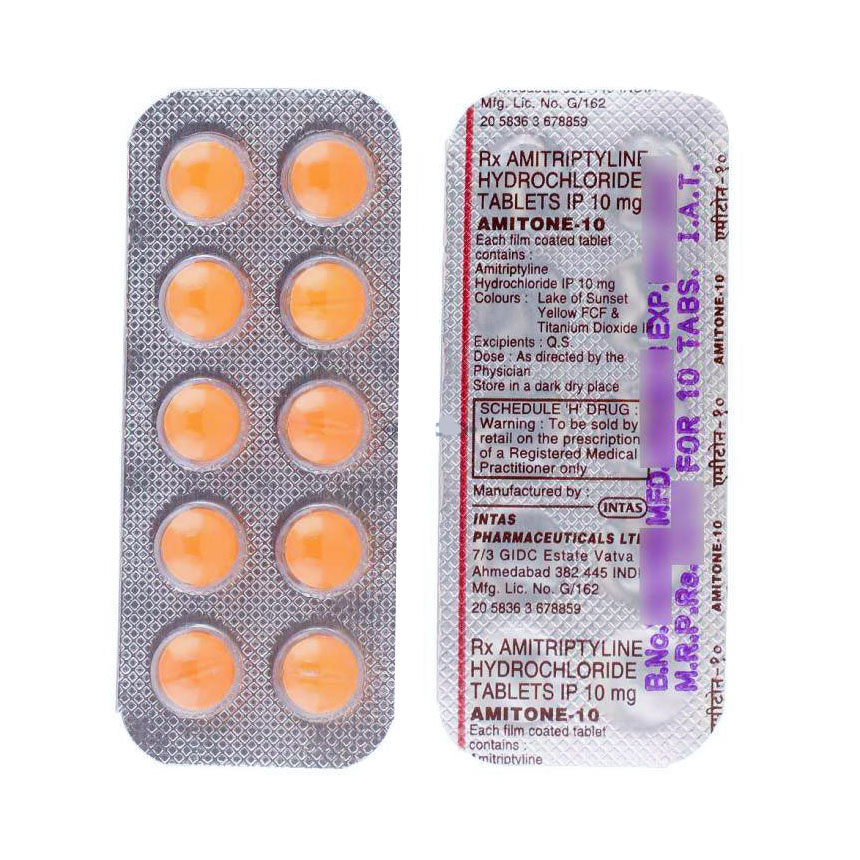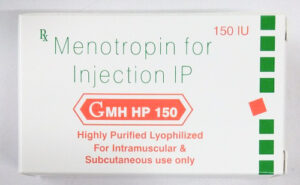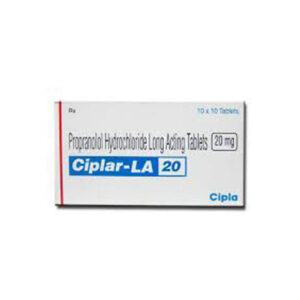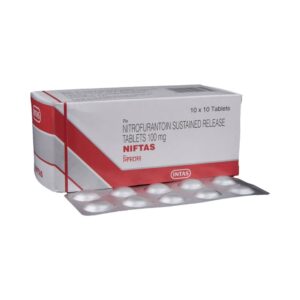Amitriptyline Information
Pronunciation
a mee TRIP ti leen
What is this drug used for?
• It is used to treat low mood (depression).
• It may be given to you for other reasons. Talk with the doctor.
Frequently reported side effects of this drug
• Fatigue
• Dry mouth
• Nausea
• Vomiting
• Lack of appetite
• Change in taste
• Anxiety
• Weight gain
• Weight loss
• Diarrhea
• Mouth sores
Other side effects of this drug: Talk with your doctor right away if you have any of these signs of:
• Depression like thoughts of suicide, anxiety, emotional instability, agitation, irritability, panic attacks, mood changes, behavioral changes, or confusion
• Confusion
• Trouble focusing
• Behavioral changes
• High blood sugar like confusion, fatigue, increased thirst, increased hunger, passing a lot of urine, flushing, fast breathing, or breath that smells like fruit
• Low blood sugar like dizziness, headache, fatigue, feeling weak, shaking, fast heartbeat, confusion, increased hunger, or sweating
• Severe cerebrovascular disease like change in strength on one side is greater than the other, difficulty speaking or thinking, change in balance, or vision changes
• Fast heartbeat
• Abnormal heartbeat
• Severe dizziness
• Passing out
• Severe headache
• Unable to pass urine
• Severe loss of strength and energy
• Bruising
• Bleeding
• Swelling
• Tremors
• Seizures
• Sensing things that seem real but are not
• Burning or numbness feeling
• Chest pain
• Sexual dysfunction
• Decreased sex drive
• Testicle swelling
• Eye swelling or redness
• Enlarged breasts
• Nipple discharge
• Chills
• Sore throat
• Severe abdominal pain
• Severe constipation
• Lack of sweating
• Vision changes
• Trouble sleeping
• Nightmares
• Noise or ringing in the ears
• Tongue discoloration
• Sweating a lot
• Eye pain
• Tardive dyskinesia like unable to control body movements; tongue, face, mouth, or jaw sticking out; mouth puckering; and puffing cheeks
• Signs of a significant reaction like wheezing; chest tightness; fever; itching; bad cough; blue skin color; seizures; or swelling of face, lips, tongue, or throat.
Medication Safety Issues
Sound-alike/look-alike issues:
Amitriptyline may be confused with aminophylline, imipramine, nortriptyline
Elavil may be confused with Aldoril, Eldepryl, enalapril, Equanil, Plavix
Elavil may be confused with Elavil OTC (an over-the-counter sleep aid containing melatonin, valerian root, and vitamins).
Geriatric Patients: High-Risk Medication:
Beers Criteria: Amitriptyline (alone or in combination) is identified in the Beers Criteria as a potentially inappropriate medication to be avoided in patients 65 years and older (independent of diagnosis or condition) due to its strong anticholinergic properties and potential for sedation and orthostatic hypotension. In addition, use TCAs with caution due to their potential to cause or exacerbate syndrome of inappropriate antidiuretic hormone secretion (SIADH) or hyponatremia; monitor sodium closely with initiation or dosage adjustments in older adults (Beers Criteria [AGS 2019]).
Pharmacy Quality Alliance (PQA): Amitriptyline (alone or in combination) is identified as a high-risk medication in patients 65 years and older on the PQA’s, Use of High-Risk Medications in the Elderly (HRM) performance measure, a safety measure used by the Centers for Medicare and Medicaid Services (CMS) for Medicare plans (PQA 2017).
Storage and Stability
Store at 20°C to 25°C (68°F to 77°F). Protect from light.
Adverse Reactions
Anticholinergic effects may be pronounced; moderate to marked sedation can occur (tolerance to these effects usually occurs).
Cardiovascular: Atrioventricular conduction disturbance, cardiac arrhythmia, cardiomyopathy (rare), cerebrovascular accident, ECG changes (nonspecific), edema, facial edema, heart block, hypertension, myocardial infarction, orthostatic hypotension, palpitations, syncope, tachycardia
Central nervous system: Anxiety, ataxia, cognitive dysfunction, coma, confusion, delusions, disorientation, dizziness, drowsiness, drug withdrawal (nausea, headache, malaise, irritability, restlessness, dream and sleep disturbance, mania [rare], and hypomania [rare]), dysarthria, EEG pattern changes, excitement, extrapyramidal reaction (including abnormal involuntary movements and tardive dyskinesia), fatigue, hallucination, headache, hyperpyrexia, insomnia, lack of concentration, nightmares, numbness, paresthesia, peripheral neuropathy, restlessness, sedation, seizure, tingling of extremities
Dermatologic: Allergic skin rash, alopecia, diaphoresis, skin photosensitivity, urticaria
Endocrine & metabolic: Altered serum glucose, decreased libido, galactorrhea, gynecomastia, increased libido, SIADH, weight gain, weight loss
Gastrointestinal: Ageusia, anorexia, constipation, diarrhea, melanoglossia, nausea, paralytic ileus, parotid gland enlargement, stomatitis, unpleasant taste, vomiting, xerostomia
Genitourinary: Breast hypertrophy, impotence, testicular swelling, urinary frequency, urinary retention, urinary tract dilation
Hematologic & oncologic: Bone marrow depression (including agranulocytosis, leukopenia, and thrombocytopenia), eosinophilia, purpura
Hepatic: Hepatic failure, hepatitis (rare; including altered liver function and jaundice)
Hypersensitivity: Tongue edema
Neuromuscular & skeletal: Lupus-like syndrome, tremor, weakness
Ophthalmic: Accommodation disturbance, blurred vision, increased intraocular pressure, mydriasis
Otic: Tinnitus
Rare but important or life-threatening: Angle-closure glaucoma, neuroleptic malignant syndrome (rare; Stevens, 2008), serotonin syndrome (rare) –







